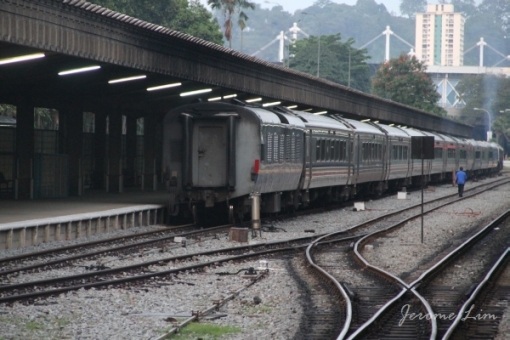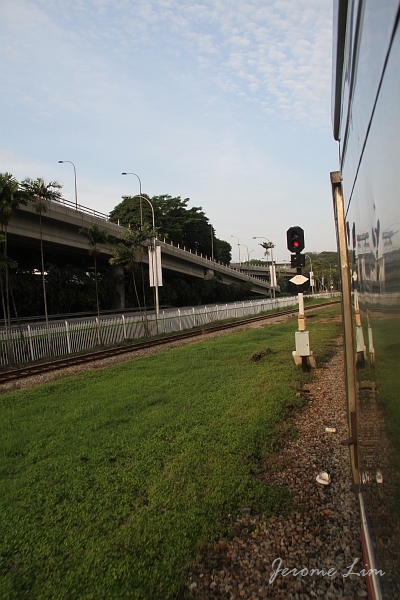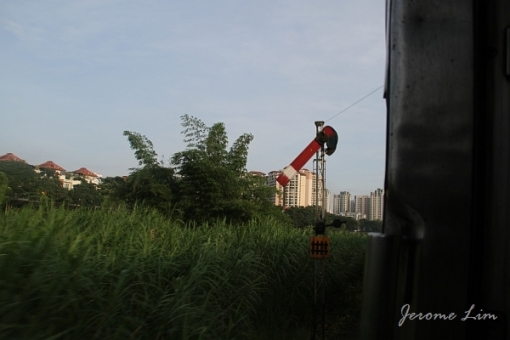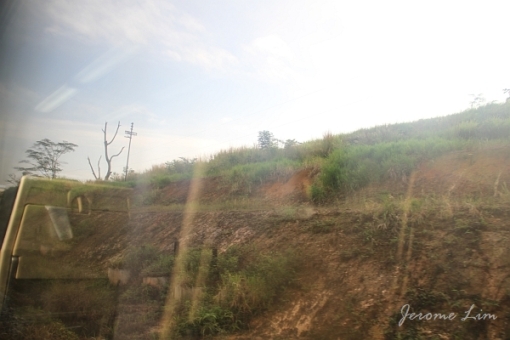I have always been one for train rides, taking one every opportunity I get whenever I find myself with time to spare, be it from the grand stations of the great European cities, or from stations closer to home, with a particular liking for the old style railways that I sometimes stumble upon. In Singapore, the opportunity had presented itself throughout my life I guess, but somehow, I never embarked on a journey from the grand old station at Tanjong Pagar until I was well into my adulthood, making many trips in the 1990s. Trains always present themselves as a convenient means to get around from one city to another, taking one from the centre of the city right into the heart of another. So it is with the Malayan Railway as well – for another few months at least when Keretapi Tanah Melayu Berhad (KTMB or KTM) moves the terminal station from Tanjong Pagar to Woodlands. With that, we will bid goodbye to the old railway lines which has served Singapore since the turn of the last century, as well as an old railway station in the heart of the city.

The last opportunity to take a train from an old style station in the heart of Singapore, on a line that has served Singapore since 1932 (parts of it date back to the turn of the last century), through Singapore's countryside, before train services terminate at Woodlands by the time the 1st of July arrives.
As mentioned in my previous post, I took another ride recently, just for the sake of reliving my previous journeys before the chance to do so evaporates once KTM moves operations to Woodlands. It will be a shame not to have had that experience, one that involves arriving or departing from the platforms which had served as the southern terminal to the Malayan Railway for eight decades from its days as the FMSR. Once the move is made, Singapore would lose not just another historical link it has had with the Malay States in the Malayan Peninsula, but also a proper train station to take a romantic journey on a train from. What will also go are the well worn tracks that served us so well, laid over a corridor of land that probably due to the railway, has remained untouched and relatively green; as well as the many markers left behind by the railway including the railway bridges, signal posts, railway buildings and control huts, distance markers and the last remaining level crossings in Singapore.

The platforms that have served as the southern terminal point of the Malayan Railway for eight decades.
The choice of the destination for the journey, was one that involved a short trip to one of the main towns in the southern Malaysian State of Johore which borders Singapore, some 90 kilometres north. The town is close enough for a slow paced day trip, and close enough that train tickets to and from are sold as “shuttle” or commuter train tickets available 24 hours prior to the journey. Kluang, along with the destination of my previous outing, Gemas, featured prominently in the final push through Malaya by the Japanese invading forces and was General Yamashita’s headquarters during the dark days at the end of January 1942. It had been a place that I knew about since the early days of my childhood being a town which my grandmother disappeared to leaving me without the stories she would relate to me as a young boy for a weekend.

The platform at Kempas Baru.

Container carriages at Kempas Baru Station.

Passengers boarding the train at Kulai Station.
Train rides, especially through the stations along the Johore length of the railway and walkabouts in Malaysian towns can be very colourful experiences, so much so that they sometimes distract one from the old world charm of the journey and the towns. I thought it would be nice to show another side of the journey and Kluang itself without colour as the images would capture a mood that would otherwise be lost in full colour.

The gentle rocking of the train gives the carriages a sleepy feel ...

A passenger at the end of the carriage.

The conductor.

Arriving at Kluang Station.

Kluang Station.
Kluang itself presents itself as a sleepy town, with the station being perhaps one of the busier places in the town, coming alive as passengers and well wishers gather on the platforms. The station itself hosts an institution in the town, a coffee shop, the Kluang Rail Coffee, that seems to be the star attraction of the town.

Kluang Station is the location of a well known and well patronised coffee shop.

The five foot way of a row of shophouses along Jalan Station.

A closed gate of a shop.

Kluang is a destination for photographers.
The town has an old world feel that maybe could have been that of the Singapore of half a century ago. Beyond its sleepy façade, the town does present some interesting finds. We stumbled upon an old Chinese medicine shop in a row of old shophouses along Jalan Mersing with seedy looking second storey hotels served by well worn wooden staircases, which we later learnt were places one would find ladies of the night. At then end of the row was a coffee shop which had some wonderful tasting treats and quite good coffee, and it was on the recommendation of a passer-by that we made a pit stop there, observing that the tables and floor of the old coffee shop were much cleaner than what we had become accustomed to in Singapore where tables are often cleaned with a swipe of an oily rag.

Not one of the staircases with a seedy destination.

The proprietor of the Chinese Medicine Shop.

Cabinets at the Chinese Medicine Shop.

Tools of the trade (at a Chinese Medicine Shop which has been at its location on Jalan Mersing since the 1950s).

The coffee shop along Jalan Mersing.

The beef noodle seller.

Won Tan Mee man.

Coffee Powder seller.

The slow pace of life extends to the coffee shop.
Leaving the coffee shop, we stepped out into a pretty hot day, which thankfully wasn’t accompanied by much humidity. Still that perhaps made the lazy stroll through town even lazier, and the first chance we got, we stepped into a modern shopping centre and the reward of some bubble tea, right across from a herbal tea vendor on his tricycle. The bubble tea outlet was crawling with customers as was the fast food outlet inside the shopping centre, leaving the streets outside deserted and somewhat forlorn.

A streetside tailor.

Typical street in Kluang.
From the shopping centre, we decided to visit the church that my grandmother visited all those years back – a plaque confirming that Archbishop Olcomendy of Malacca and Singapore (a throw back to the pre-independence archdiocesan boundaries that once existed), had consecrated the church in 1964. The airy little church at the end of Jalan Omar near the station is reminiscent of some of the village churches that once existed in Singapore and is simple in form and architecture.

Church of St. Louis, built in 1964.

Stained glass inside the Church of St. Louis.

Pews inside the church.
It was a short walk to the station next, to sit down at the much touted Railway Coffee shop. It was packed when we arrived just after it opened again at 2 pm, leaving us with a little wait … It was more for the atmosphere that sitting in that old cafe in an old railway station that might have been built in the early 1900s provided than maybe the fare the coffee shop offered. Soon, it was time to take the journey back … another one into Tanjong Pagar, where food stalls that remind us of days gone would soon be seeing their final days. Even if it is not for the train ride it is still worth a visit to the station to visit the makan stalls for chances are when the station finds a second life it might be where only the well heeled would dine. To top a visit to what is still very much a part of Malaysia as is the railway line, why not have something at the station that has become synonymous with street fare across the Causeway … a greasy but very tasty Ramly burger.

Like much of the world we live in ... old is being replaced by the new.

Back at Kluang Station.

Passengers waiting at the platform.

Another scene at the station.

Inside the Kluang Rail Coffee shop.

Having a conversation over a cup of coffee inside the Kluang Rail Coffee shop.

The busiest part of town?

On the 1543 shuttle into Tanjong Pagar ...

A locomotive.

The train ride provides an opportunity to catch up on some sleep.

A last chance to grab a Ramly burger at Tanjong Pagar ...
This slideshow requires JavaScript.
To read my series of posts on Journeys through Tanjong Pagar, please click on this link.








































































































































































































































































































